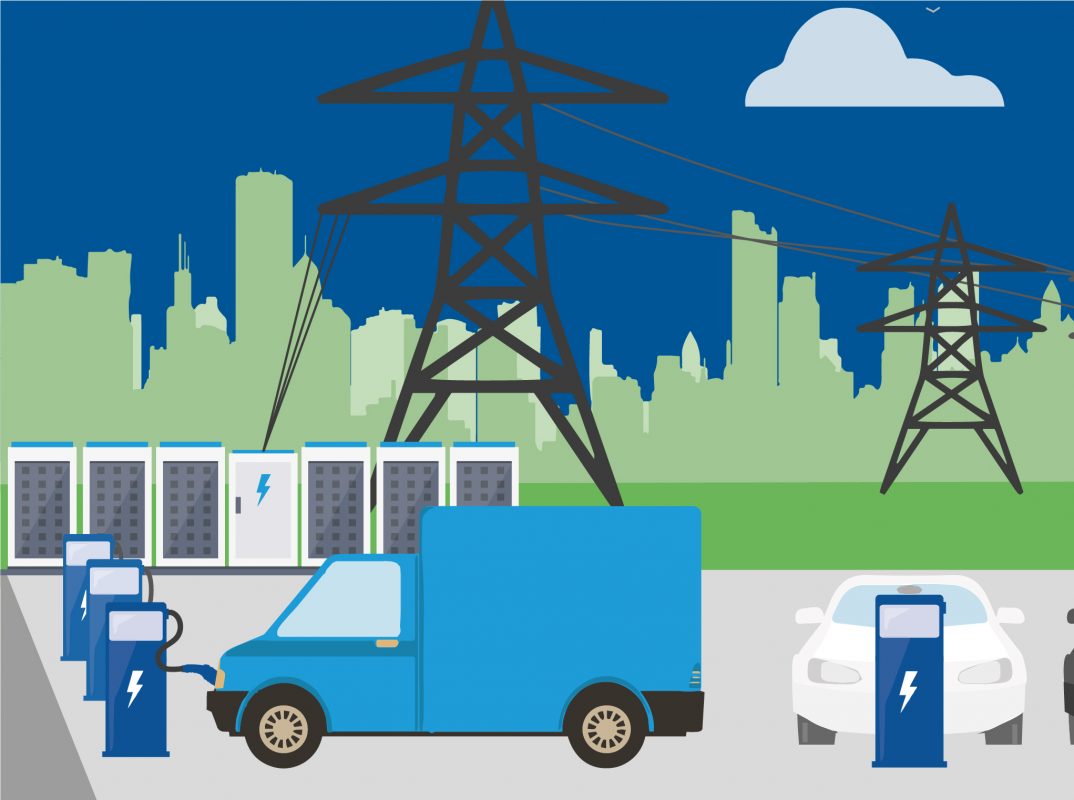
- Categories:
- News
- /
- Announcement
Simulating energy scenarios to explore local emissions forecasts
We live in a world of multi-vector energy systems. We have solar panels on roofs, electric vehicle charging and offshore wind farms. We have gas heating, petrol stations and battery storage. All these constituent parts connect to form an energy network.
Exploring the interconnections between each vector can lead to efficiencies in energy usage, greater utilisation of supply and demand, and ultimately create a flexible network with lower emissions. In the pursuit of net zero, simulating the interactions and impact of a decentralised energy system – formed of multiple vectors – can inform key, low carbon strategic decisions.
Caldicot is a small Monmouthshire town, next to the River Severn near Newport, with a photovoltaic (solar panel) farm to the south. In order to meet the demands of growing populations and adopting low emission technologies, the council wanted to evaluate potential future scenarios with balanced energy and the impact on emissions.
To do this, Cenex developed Jigsaw, a modelling environment with disparate modules that can be pieced together to simulate a network. Each can be individually switched on and off to simulate various energy scenarios and then monitor the outputs, scalable for any size, area, population or timespan.
Jigsaw runs off simulated and real-world data, whichever is readily available, such as simulated vehicle usage profiles and home demands, or data from trials and energy monitors.
In this instance, it can pair a family home demand with a specific electric vehicle and driver archetype to create a module that works out the energy required and possible emissions. It can also monitor any offset CO2 from renewable sources and ensure the system’s energy generation and demand is balanced.
If it isn’t balanced, the model can assess imports, or exports as necessary, by linking two or more different modules and transferring energy in a flexible system.
Jigsaw also allows the created network simulation to connect to modelled central controllers or optimizers, one at a time to explore the effect they can have.
In the instance of Caldicot, Jigsaw explores demand and emissions in scenarios of a decentralised energy system: utilising solar panels and vehicle-to-grid chargers, exploring population increases, as well the possible impacts of developing a new fuel station, or a nearby waste water heat pump and grid battery storage.
The model also explores potential financial costs for the consumer: electricity prices will decrease with increased renewable sources, and flexible tariffs will affect peak/off-peak rates in line with energy demand.
A proposed Virtual Private Network (VPN) would manage the whole energy network – one single aggregator for the town for better efficiency, greater optimisation and less waste to ensure everyone pays their due.
The Jigsaw model shows the feasibility of Caldicot’s potential energy scenario, showing what could happen in the future and producing technical outputs to inform a business case.
Undertaking an energy revolution in order to reduce emissions is on the horizon for many, and simulating scenarios is the first step of that process.
Get in touch to see how modelling can inform your low emission decisions